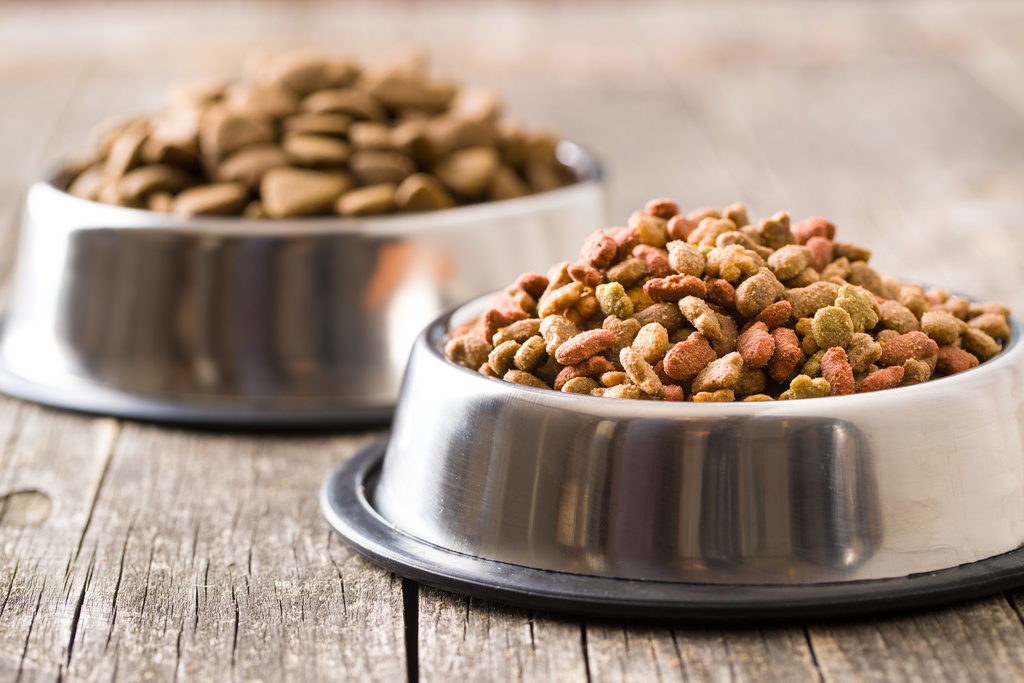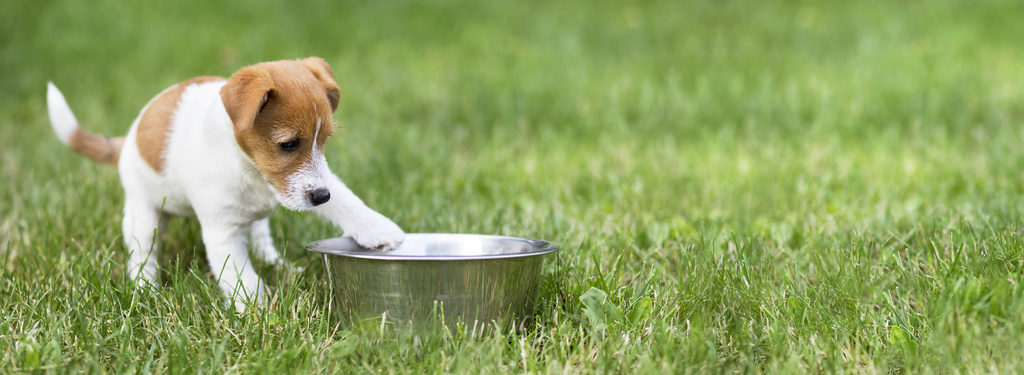Your dog’s dietary requirements will change several times over the course of its life. As your pet grows from a puppy, to an adult dog, and finally to a senior dog, its protein and carbohydrate requirements will evolve. Sometimes the reason for changing food may simply be that you want your dog to benefit from eating a superior product.

Making the switch
When introducing a new food to your pet, for whatever reason, it is very important to make the change gradually. Dogs have sensitive stomachs. By easing your pet on to their new diet you will firstly minimise a negative reaction because of a change in flavour. More importantly, you will avoid upsetting your pet’s digestive system with symptoms, such as tummy upsets, runny stools and regurgitation. Switching gradually is called transitioning.
Transitioning your pet on to a new food is easy. Begin by introducing the new diet as a very low proportion of their old diet. Mix 25% of the new food with your dog’s old food and gradually increase the percentage of new food over the next seven days. Initially, the amount you feed your pet should be the same as for the old food. However, you may find that if you are moving to a superior product, the feed portions may reduce.
| Transition Day | Old food | New food |
|---|---|---|
| Day 1 | 75% | 25% |
| Day 2 | 70% | 30% |
| Day 3 | 60% | 40% |
| Day 4 | 50% | 50% |
| Day 5 | 40% | 60% |
| Day 6 | 25% | 75% |
| Day 7 | 0% | 100% |
An aid to transition
To help with palatability and minimise the possibility of your dog not accepting the change of diet, consider adding a topping to the existing diet prior to the transition, and continue with the topping throughout the transition. Healthy Everyday Pets produce a highly nutritious bone broth in beef and in chicken flavours. This delicious liquid treat will add extra nutrients and flavour to kibble and will encourage fussy eaters.
After the transition
Even though the change to the new diet should take only take a week, you may discover that your dog’s digestive system takes a little longer to adjust to the new food. If this happens, just reduce the percentage of new food in their diet for a few days and then step it up once more.

After your pet has been transitioned completely on to the new diet, it is important to assess your pet’s overall condition. A new healthy diet should result in a healthy body weight, improved skin and coat, and good stool quality. If the move to a new food was at your veterinarian’s recommendation, then it would be appropriate to make a follow-up appointment after two months.
Rescue animals
Dogs that have lived in a pet rescue centre or shelter are unlikely to have been fed premium food. Adapting to a new home will be stressful for your new pet and changing food is likely to add to this. Before picking up your new dog, try to find out what brand and type of food it was being fed. If the shelter is unable to let you have a week’s supply, it would be worthwhile buying a small quantity to enable you to switch to a premium food without causing any distress.
Transitioning your pet on to a different food is easy if you follow the simple steps outlined above. Transition gradually to avoid any negative reaction.
